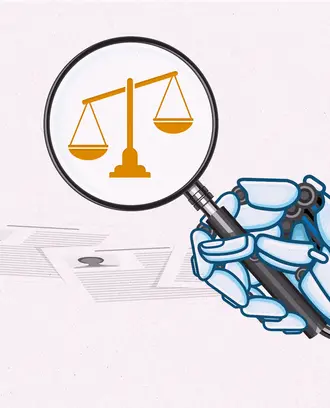Credit: Rob Dobi
There’s a battle to attract the top talent raging in the tech industry and elsewhere, as companies fight to spirit away the best and brightest to work on their next big data, autonomous vehicle, or artificial intelligence project.
But this tug of war might not be necessary at all: Keeping hold of skilled workers already in your employ might actually be the better — and cheaper — path.
“[Organizations] are always looking for people on the cutting edge of technology, but they have not invested in making sure their current employees have stayed at the cutting edge,” said Thomas Kochan, a professor of work and organization studies at MIT Sloan, and the co-director of the MIT Sloan Institute for Work and Employment Research. “American industry totally underestimates the trainability of the American workforce.”
Here are a few steps Kochan recommended to retain and elevate the pool of talent that’s already at your fingertips.
Keep skills fresh
A proven way to lose the digital talent you already have is by failing to offer them opportunities for continuing education, which can cause their skills to depreciate. When that happens — and it can happen quickly, Kochan said, especially in the tech industry — staffers may begin to feel under-challenged and seek out employment that will allow them to “skill up” and stay current.
“Make [the work] interesting and challenging, and they’ll see that their skills continue to be up-to-date,” he said. “That actually holds on to people, rather than leading them to say ‘Gee, my skills are getting out of date, I better go somewhere else to get them refreshed.’”
Kochan cited information technology giant IBM as an example of a company that’s successfully navigated the waters of talent retention as it transformed from a hardware company to a software firm, now a cloud computing and artificial intelligence company. IBM builds profiles of employees through aptitude tests and work performance reviews to provide them with a path toward attaining the skills necessary to stay with the company through its next incarnation, he said.
“I’ve watched them increase their estimates of what percentage of their workforce is capable of making that transition,” Kochan said. “Some might not make it, and you have to deal with them fairly, but a lot of people are capable of making the transition if you do it over time, and give them the time to develop skills, and a road map. That’s what we need in the industry more than anything else.”
That’s in contrast with companies that discard their current workforce, usually through large layoffs, to bring in new people. Taking that route sends the wrong message to the company’s workers, Kochan said, and it can lead many of the most competent employees to lose faith in leadership and look for work elsewhere. That can be expensive.
“It backfires,” he said. “There’s always going to be competition for new folks. You can ease that competition by making sure that once you get them, you keep them.”
Consider your culture
No matter how important, challenging, or rewarding the work is, no one wants to work for an organization where the social environment is unsupportive or downright toxic.
“If you have a situation where people don’t feel valued, where they don’t feel they have that opportunity, whether it’s no one is listening to them or it’s a tense environment — that’s a ticket to high turnover,” Kochan said.
“People want to come to work and enjoy each other, to learn from each other, to work together in teams and help each other out, and to be appreciated,” Kochan continued. “If they’re given the opportunity to do that, and the discretion to do that, and are encouraged to work together, then you create a positive culture … that is all done in the spirit of collective community.”
Share the wealth
Offering competitive pay and benefits is an important way to attract and keep top talent, but there are other things you can offer to boost employees’ sense of ownership and loyalty to the company.
Many companies, Kochan said, have begun offering some form of profit- or gainsharing or operational bonuses.
“There’s a sense that ‘This is my company, and I have a stake in it. If we do well, I’m going to do well, and we’ll all benefit from it,’’’ he said. “It’s a psychological as well as a financial ownership, and it really builds loyalty.”
Find the right mix
When searching for digital talent, top-notch technical skills are undoubtedly a critical feature to look for, Kochan said, but don’t allow that focus to overshadow an equally important aspect of the equation — social skills.
“We’ve learned over the years that it’s not just the technical aspects of digitization,” Kochan said. “It’s the ability to fit [people] into an organization, to listen to the workforce, to gain the knowledge of how to improve the work process, and then move from there.”
The ideal candidate may not be the “typical graduate,” he pointed out. “The typical graduate is much more siloed.”
“The problem is that too many of the technical schools focus on the technology, on the analytics side, but don’t provide that social side,” Kochan said.
Better partnerships between academia and industry, including expanded internship opportunities and online learning, could go a long way in making sure both sides are communicating about what they’re offering and what they need to see from talent entering the workforce.
Illustration: Rob Dobi



